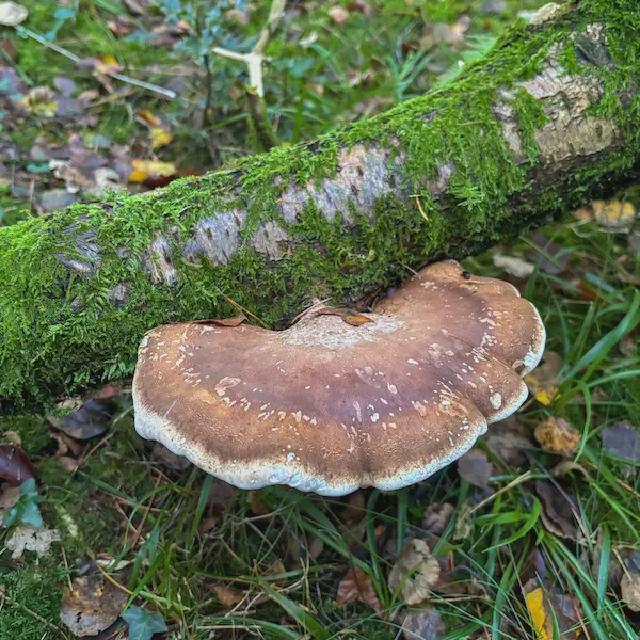The Birch Polypore (Fomitopsis betulina), sometimes referred to as the razor strop fungus, is a common bracket fungus that primarily grows on birch trees. Found in temperate regions of the Northern Hemisphere, the birch polypore begins as a small globe and enlarges into a curved bracket, reaching up to 20 cm across.
Identification and growth
The birch polypore mushroom is easily recognized by its smooth, leathery cap that ranges from light brown to grayish white. Typically found on dead or dying birch trees, this mushroom plays an essential role in forest ecology, breaking down wood and returning nutrients to the soil. This type of polypore, or bracket fungus, grows as a “shelf” on the tree trunk, with a pore surface on the underside made of densely packed tubes instead of gills. For more information on identification visit Wild Food UK
Traditional uses and Medicinal properties of the Birch Polypore
Historically, the birch polypore mushroom was valued for its medicinal benefits. Known for its antibacterial and anti-inflammatory properties, ancient peoples across Europe and Asia used the birch polypore as a natural remedy for wounds and gastrointestinal issues. Often, it was dried and powdered, then either applied topically or brewed into a tea for medicinal use. Additionally, its durability earned it the nickname “razor strop fungus” due to its historical use as a strop for sharpening blades.
Modern studies continue to explore the health benefits of birch polypore. Compounds found in this medicinal mushroom, such as betulinic acid, are believed to possess antibacterial, antifungal, and anticancer properties. Current research highlights the potential of birch polypore extracts to support immune health and inhibit cancer cell growth. For more detailed information, you can read further in this article on the National Library of Medicine
Ecological role of Birch Polypore
Beyond its health benefits, the birch polypore plays a vital role in forest ecosystems. Acting as a decomposer, it breaks down dead birch trees, aiding in nutrient cycling and supporting a variety of organisms that depend on decaying wood for habitat. The presence of this fungus often indicates the health of birch tree populations, as it typically grows on weakened or dead trees.
Birch Polypore and Ötzi the iceman
The birch polypore has archaeological significance due to its association with Ötzi the Iceman, a well-preserved mummy discovered in the Alps. Researchers found that Ötzi carried pieces of birch polypore, suggesting he may have used it for medicinal purposes, possibly to treat infections or as a source of fire tinder.

